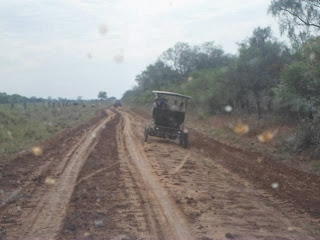“Millions are waking
up to the truth that followers of Jesus are called to love the unlovable, serve
the oppressed, live in solidarity with the poor, proclaim Good News to the
lost, and be willing to lay down our life for our enemies. Multitudes are waking up to the truth that
the distinctive mark of the Kingdom is the complete rejection of all hatred and
violence and the complete reliance on love and service of others, including our
worst enemies. Masses of people are
waking up to the truth that followers of Jesus aren’t called to try to win the
world by acquiring power over others
but by exercising power under
others—the power of self-sacrificial love.” - Greg
Boyd
In January I did not know what “Anabaptist” meant. Honestly, I don’t think I had ever heard the
term. When I applied to be a part of the
Mennonite Central Committee (MCC) in March, I did not know what being Mennonite
entailed. When I arrived in Bolivia in
October, all I knew about Anabaptism was what I read in a book called The
Naked Anabaptist by Stuart Murray recommended to me by a friend. (It is a
good introduction to Anabaptism if anyone is interested!)
I got the feeling that I wasn’t the only one who didn’t know
much about Anabaptism since most people asked me if I had to wear a bonnet when
I told them I was going to serve with the MCC.
However, in the past two months I have learned so much about
the history of Anabaptism, the convictions that come along with Anabaptism, and
the role of Anabaptist churches in Colombia.
I hope to synthesize some of that information for you here.
First of all, Anabaptism is not a denomination of
Christianity, but rather it is a perspective on beliefs, a vision on how to
live, a type of theology. Many different
denominations embrace Anabaptist beliefs, including Mennonites, Mennonite
Brethren, Brothers in Christ, Amish, Quakers, and many other people who
identify as Methodist, Presbyterian, Lutheran, or any number of other
denominations.
Similar to other protestant groups, Anabaptists trace their
roots back to the Reformation in Europe with Martin Luther’s 95 theses in the
1500s. The Anabaptist movement was a
movement by people in the countryside, basing their divergence on three main
ideas:
- Discipleship- People make their own decision to believe in God and grow in relationship with God. It is a decision that one has to make every day and act on. It is not just following rules, going to church on Sunday, and taking communion, but rather basing one’s lifestyle and actions on the example lead by Jesus. This is also where the decision to baptize as adults (when an individual can make the decision to be a Christian) instead of infants comes from, as well as the name “Anabaptist” which means to re-baptize. This was a reason for much political and religious persecution during the formation of the theology.
- Community- Church is not a structure, a set of rules, or a hierarchy. Church means a group of people believing and growing together in which everyone has access to reading and interpreting the Bible together in community.
- Peace- Love and reconciliation with each other and with God is an essential part of faith.
Supporting peace in Colombia is no exception to the theme of
the complexity of life.
A common response from churches when confronted with issues
concerning peace and reconciliation is silence.
For one thing, it can be dangerous to work towards peace in the
Colombian context. In Colombia it is
against the law to dialogue with illegal armed groups. Should the church risk prosecution by the state because of a conviction to pursue peace in the country? Do they risk persecution by other illegal
armed groups if they enter into conversation with one group? How does a church react with demobilized
paramilitary members arrive at their doors?
Many churches are comprised of people who have been victims of violence
or displacement. What should the church
do when guerrilla members and perpetrators of violence ask to be a part of the
community as well?
These situations bring up many questions and challenges to
living out Anabaptist values.
But questioning is important. I feel that I must constantly question and
process what I’ve been taught, what I am hearing now, and where I hope to be in
the future. Through listening to new
ideas, thinking about what they mean and how they affect me and others, trying
them out, and feeling comfortable discarding what doesn’t work and
incorporating what does, I can continually grow in faith, love, compassion,
determination, and security that peace is possible in this world.
These are Anabaptists:
And these are Anabaptists.
Got to love diversity!
J







No comments:
Post a Comment